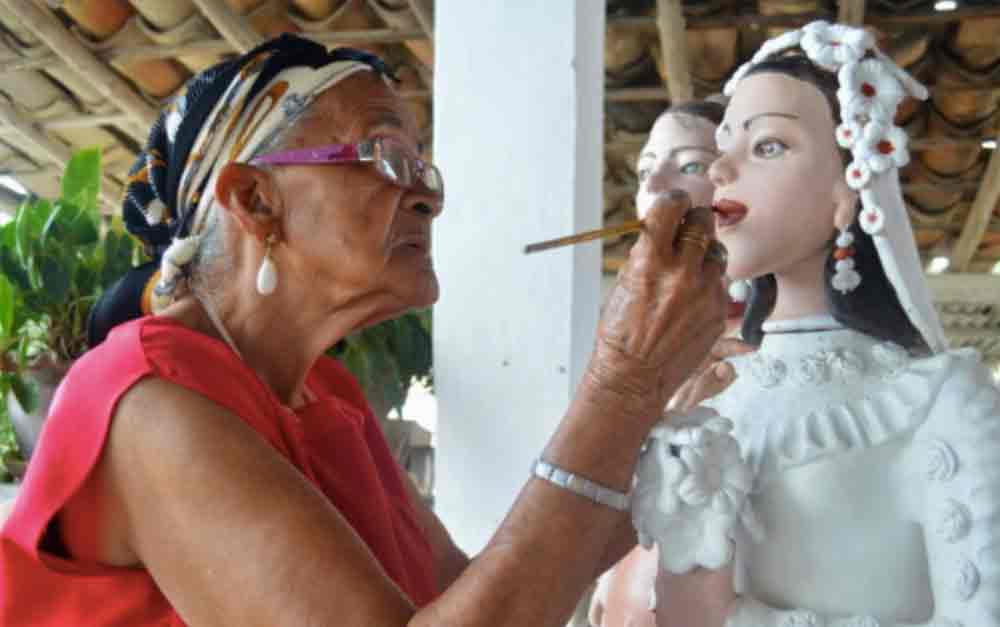Interpretation by Lis Haddad

The Jequitinhonha Valley, a region that encompasses 55 municipalities from central to northeastern of Minas Gerais, is known as one of the poorest regions in Brazil. Among the activities that make up this territory is the production of large monoculture eucalyptus plantations for the production of cellulose and mining, which, unlike what they promised when they were implemented - to generate employment and wealth for the region - have drawn poverty maps.
The concentration of land and capital by large industries has unfolded into degrading social and environmental effects, among them soil desertification and the exodus of the male population in search of work.
The men's departure gave the women who remained the nickname "widows of drought " and also the need to create ways to supplement the family income. The infertile soil then became the raw material for the region's rich handicrafts. The craftswomen say that the learning to mold clay was taught to their ancestors by the indigenous women who lived there. The traditional knowledge has passed down through generations and assumed new forms with the passage of time.
The utilitarian items produced in the beginning, such as pots for storing food, gave way to decorative objects, human and animal shapes, and nature motifs. The well-known dolls from the Jequitinhonha Valley narrate the daily life of the families in the region. Wedding scenes, children's games, and rituals such as weddings are reproduced.
From the 1970's on, with the support of government institutions, there was a boost in the pottery profession in the region and the women organized themselves in Associations and Cooperatives, generating economic impact at home and consequently in their communities.
The act of creating, for these women, is a collective act and inserted into the tasks of their own home. From the same clay from which the ceramics are made, the houses of the artisans and the kiln for firing the pieces are also built. There is a unity between the familiar space and the work place.
The financial return coming from the activity mostly performed by women has also changed the gender issue in the family and social structure, and the communities that were considered patriarchal have become matriarchal. In addition, it has reduced the exodus of men in search of work, making the communities more independent from large industries to obtain sustenance.
The encounter of Jequitinhonha Valley women's hands with clay shapes more than dolls and animals. It models a new perspective for their families and the entire region, and develops the self-esteem and empowerment of the entire community involved.
References
- DALGLISH, Geralda. Tradição e identidade cultural na cerâmica popular do Vale do Jequitinhonha. 23º Encontro da ANPAP – “Ecossistemas Artísticos” 15 a 19 de setembro de 2014 – Belo Horizonte - MG. Disponível em: http://www.anpap.org.br/anais/2014/simposios/simp%C3%B3sio05/Geralda%20Dalglish.pdf Acesso: 23 de julho de 2022
- PINHEIRO, Camila. Vale do Jequitinhonha: onde o sol brilha mas não se põe. 29 de Julho de 2021. Disponível em: https://www.artesol.org.br/conteudos/visualizar/Vale-do-Jequitinhonha-onde-o-sol-brilha-mas-nao-se-poe Acesso: 23 de julho de 2022
